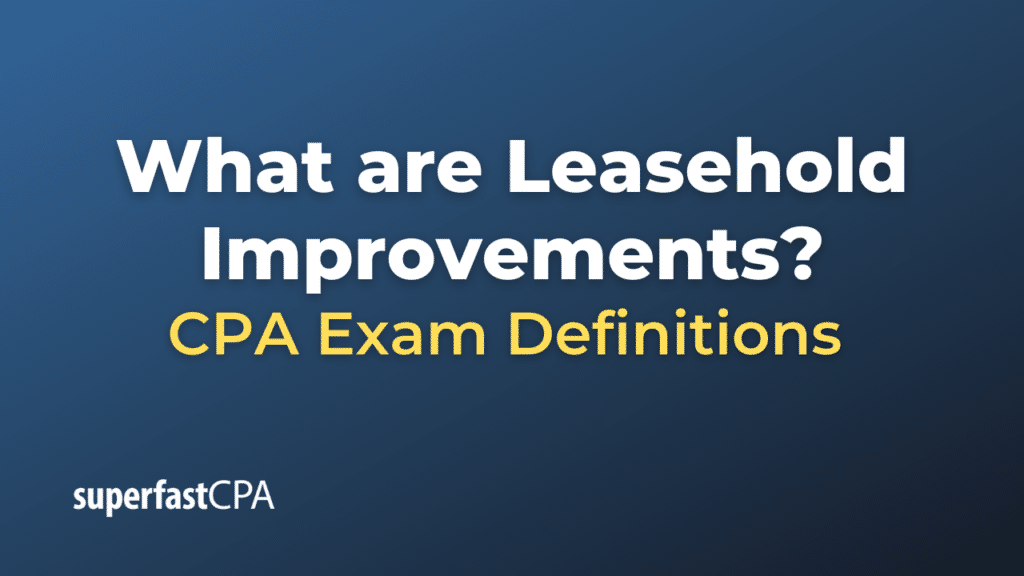Leasehold Improvements
Leasehold improvements, also known as tenant improvements or build-outs, are the changes made to rental property to customize it for the particular needs or preferences of a tenant. Leasehold improvements can include changes such as painting, installing partitions, changing the flooring, or other remodels.
These improvements are typically made to commercial properties to fit the specific needs of a business. For example, a business renting office space might need to construct additional offices or conference rooms, or a restaurant might need to remodel the kitchen of a rented space.
From an accounting perspective, leasehold improvements are considered a capital expenditure and are usually depreciated over the life of the lease. This allows the tenant to spread out the cost of these improvements over the period they will be using the property, which can help with budgeting and cash flow.
However, it’s important to note that these improvements typically become the property of the landlord at the end of the lease, unless an agreement is made otherwise. This means that the tenant does not recoup the cost of these improvements when they move out. The exact terms and conditions regarding leasehold improvements should be clearly laid out in the lease agreement.
Example of Leasehold Improvements
An example that encompasses both the physical changes and the accounting aspects of leasehold improvements.
Let’s say a company, ABC Tech Inc., leases a large, open-plan office space for their operations. However, they require separate rooms for their different departments, a reception area, a few private offices for the management, a meeting room, and a custom server room. These changes aren’t part of the original leased space, so ABC Tech decides to invest in leasehold improvements.
The total cost for all these improvements is $100,000. According to the lease agreement, ABC Tech will be leasing the space for 10 years. From an accounting perspective, ABC Tech wouldn’t record the entire $100,000 as an expense in the year the improvements are made. Instead, the cost is spread out, or depreciated, over the 10-year term of the lease.
So, each year, ABC Tech would record a depreciation expense of $10,000 ($100,000 total cost / 10 years). This means that their profit for each year would be reduced by this $10,000 depreciation expense, which also reduces their tax liability for the year.
At the end of the 10-year lease, assuming there’s no renewal or purchase option, the improvements (the separate rooms, reception area, offices, meeting room, and server room) become the property of the landlord. ABC Tech would not receive any compensation for these improvements when they move out, unless it has been otherwise agreed upon in the lease agreement.













